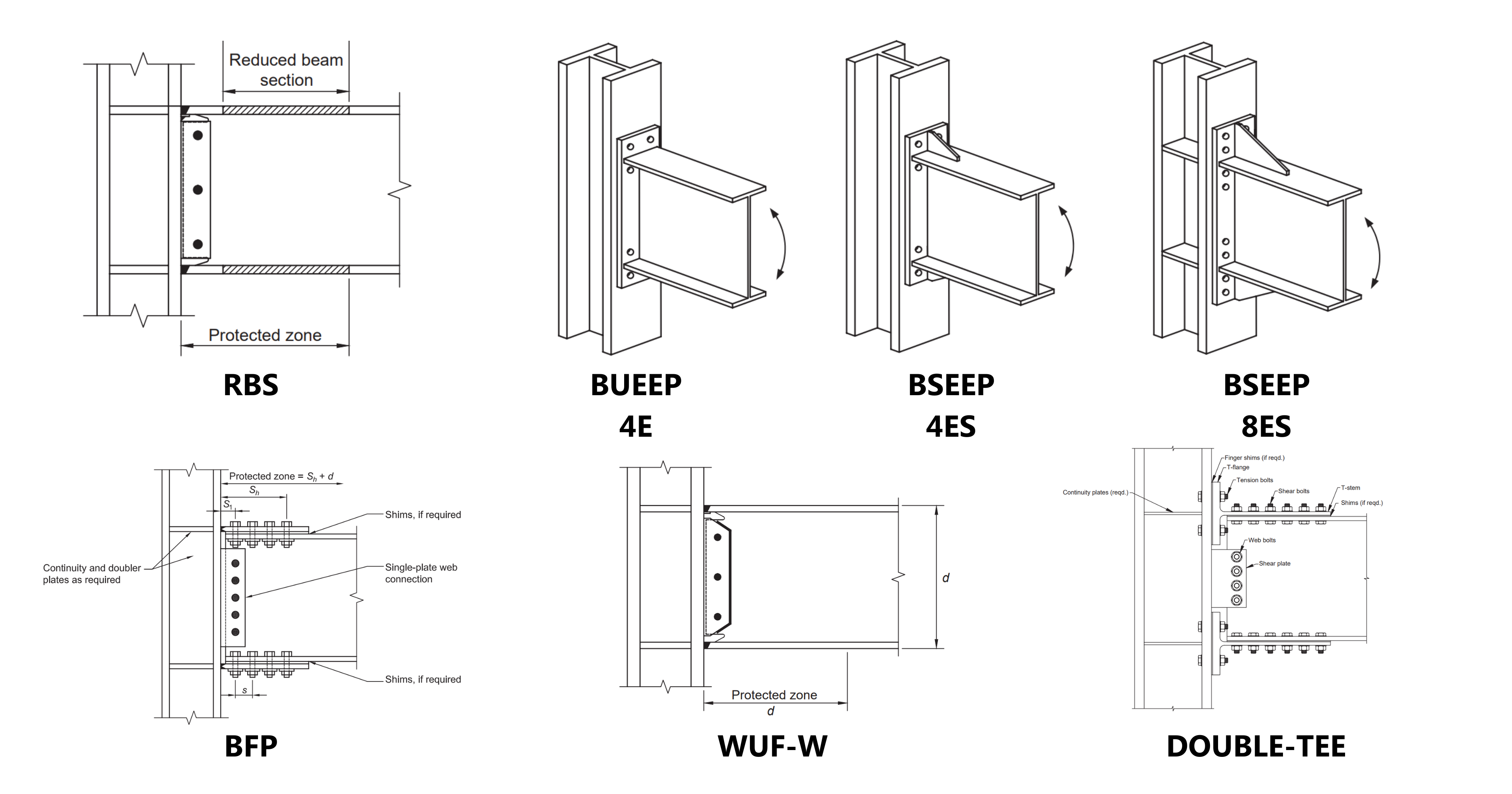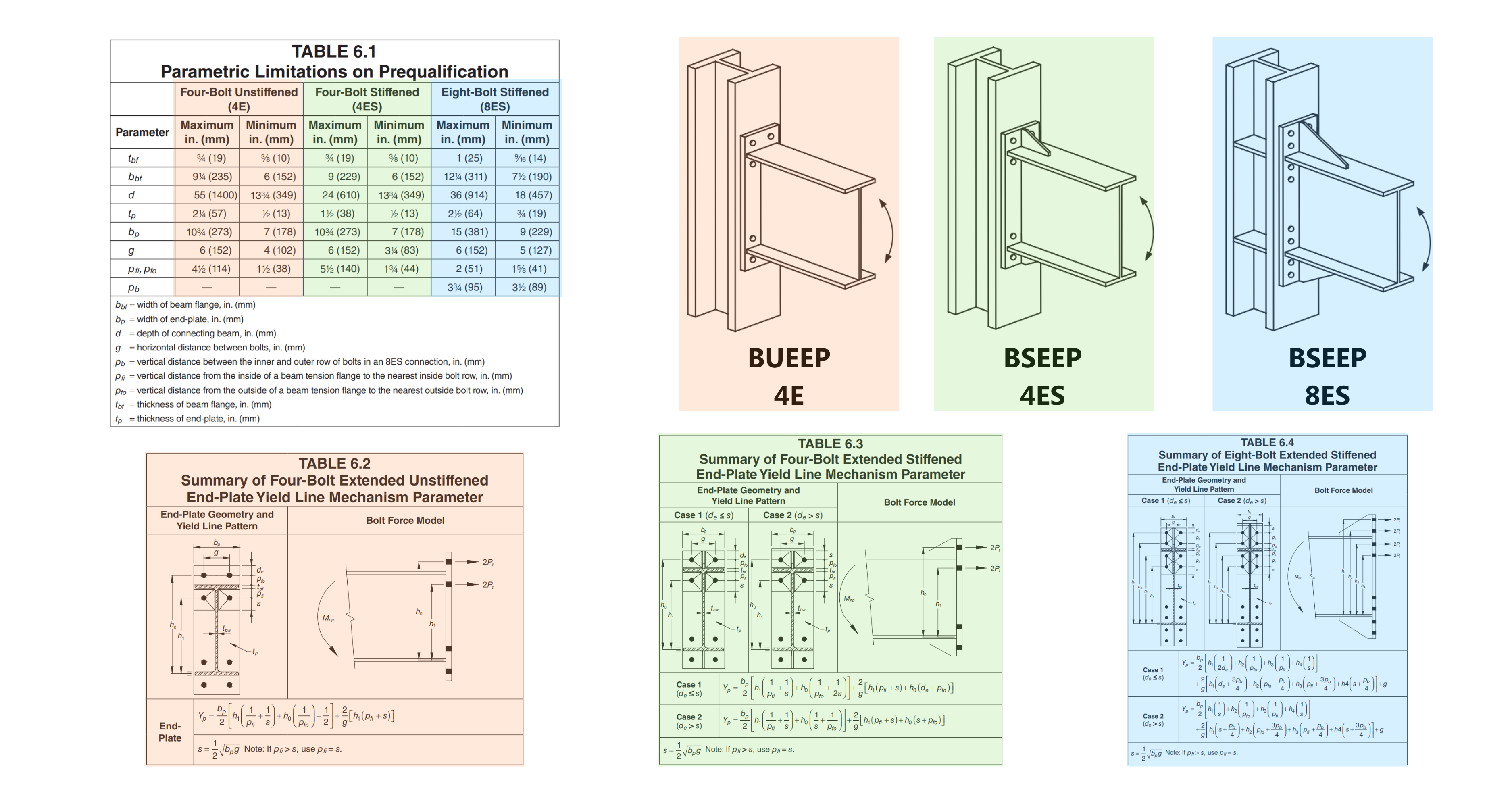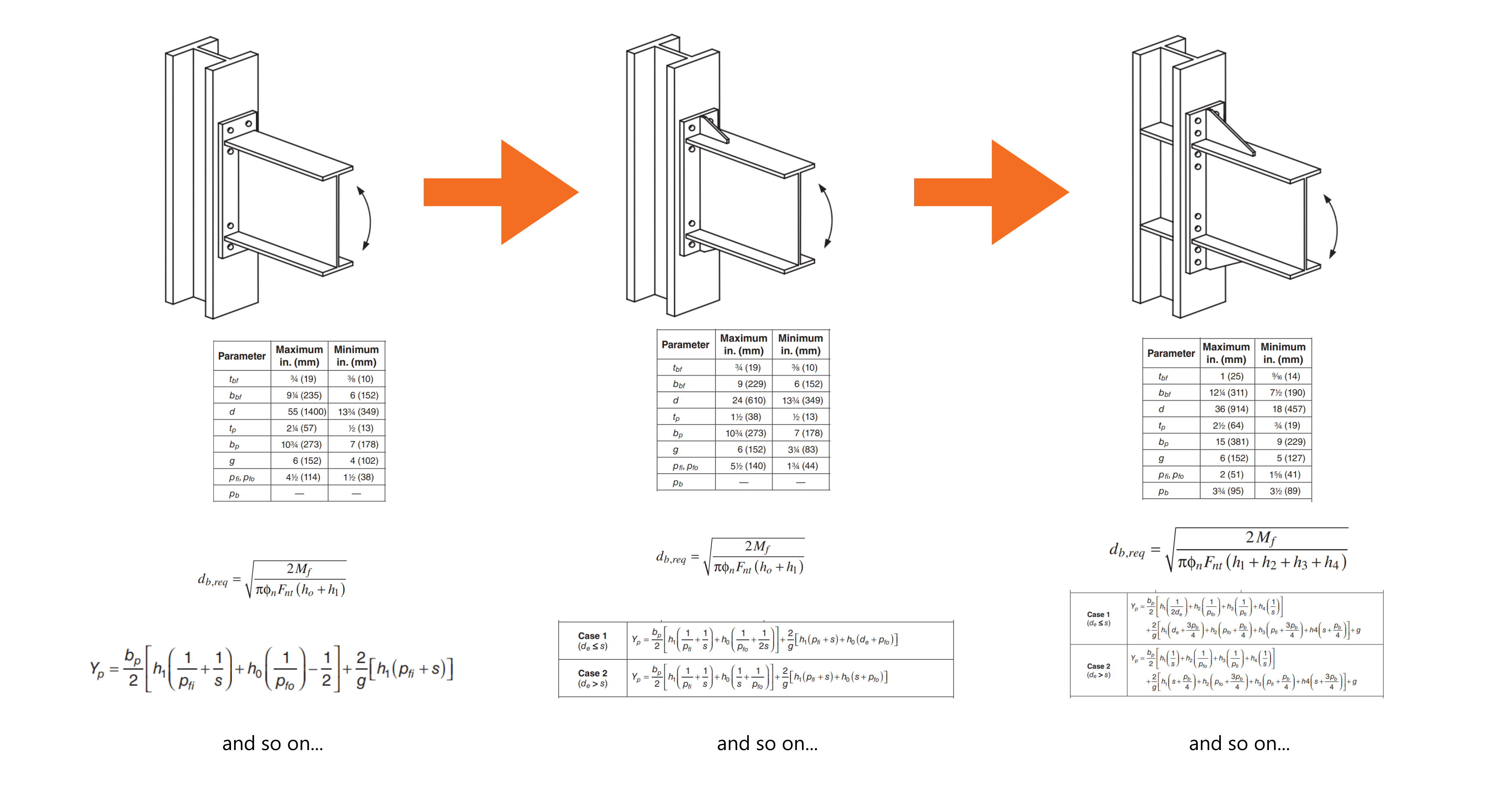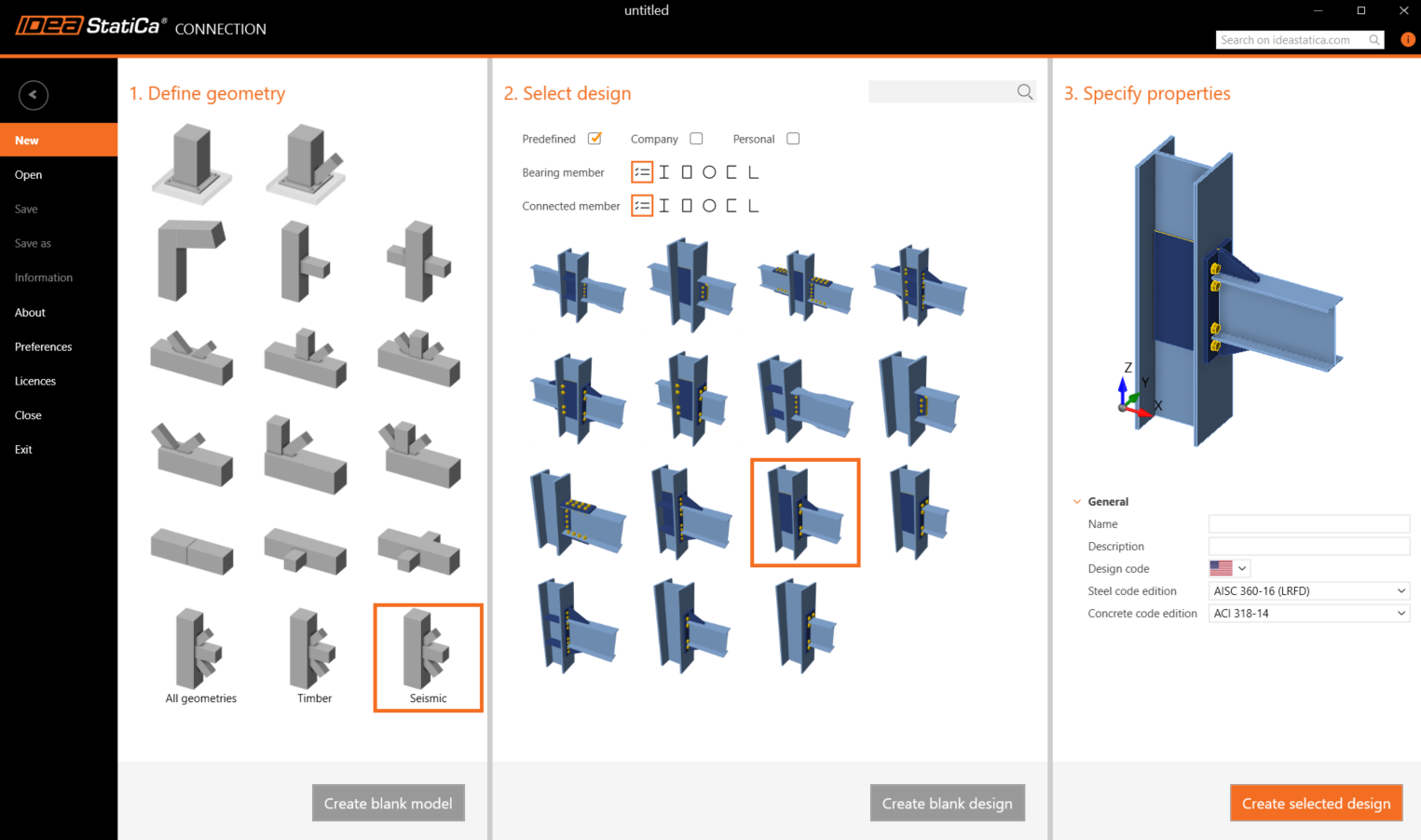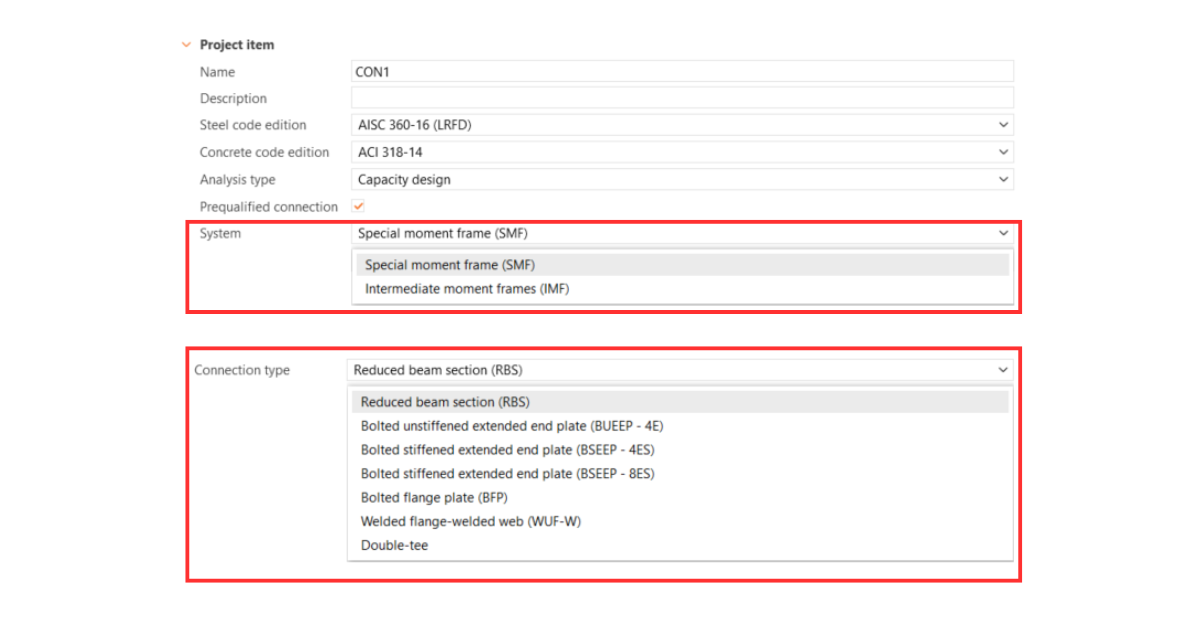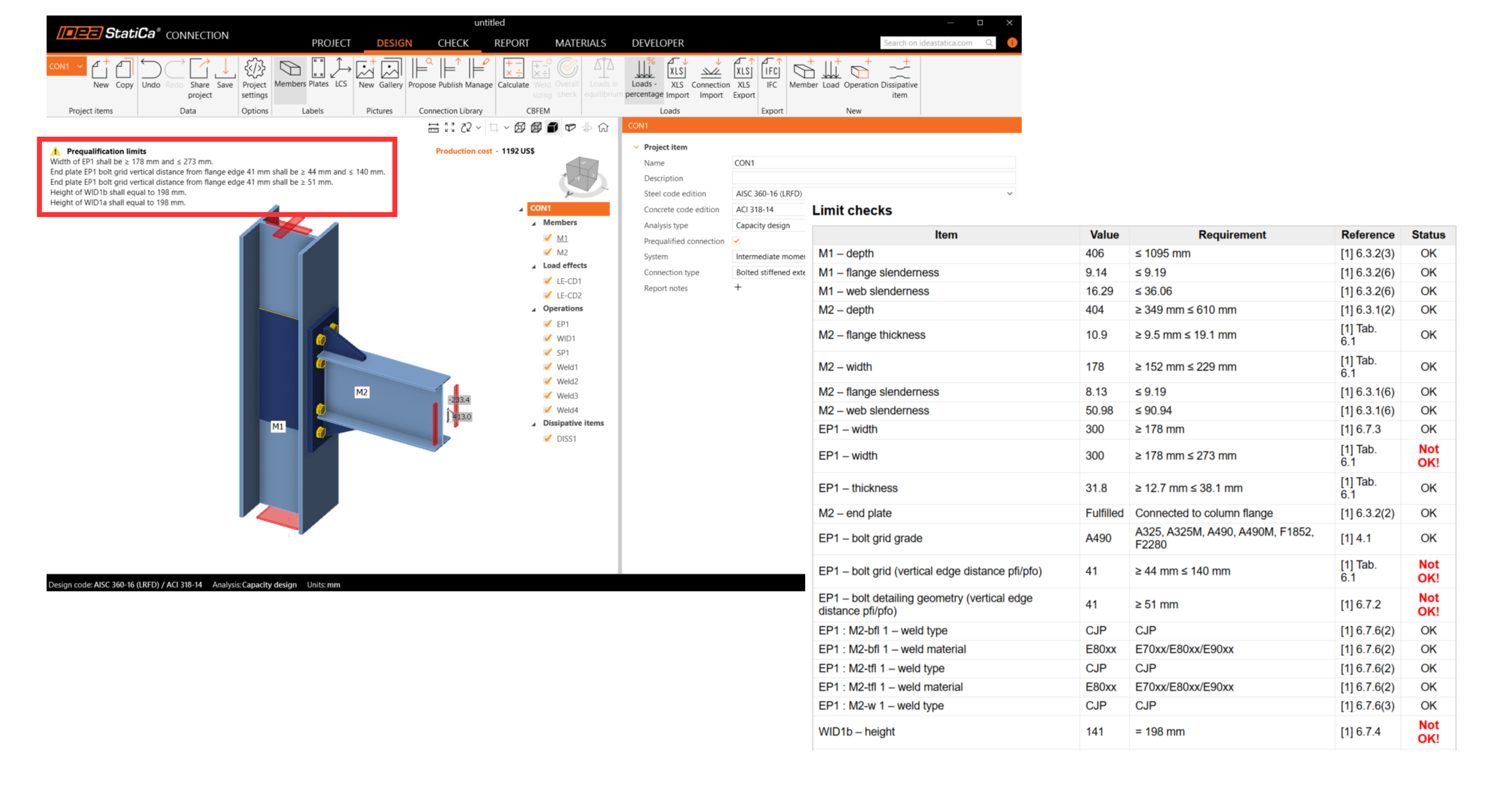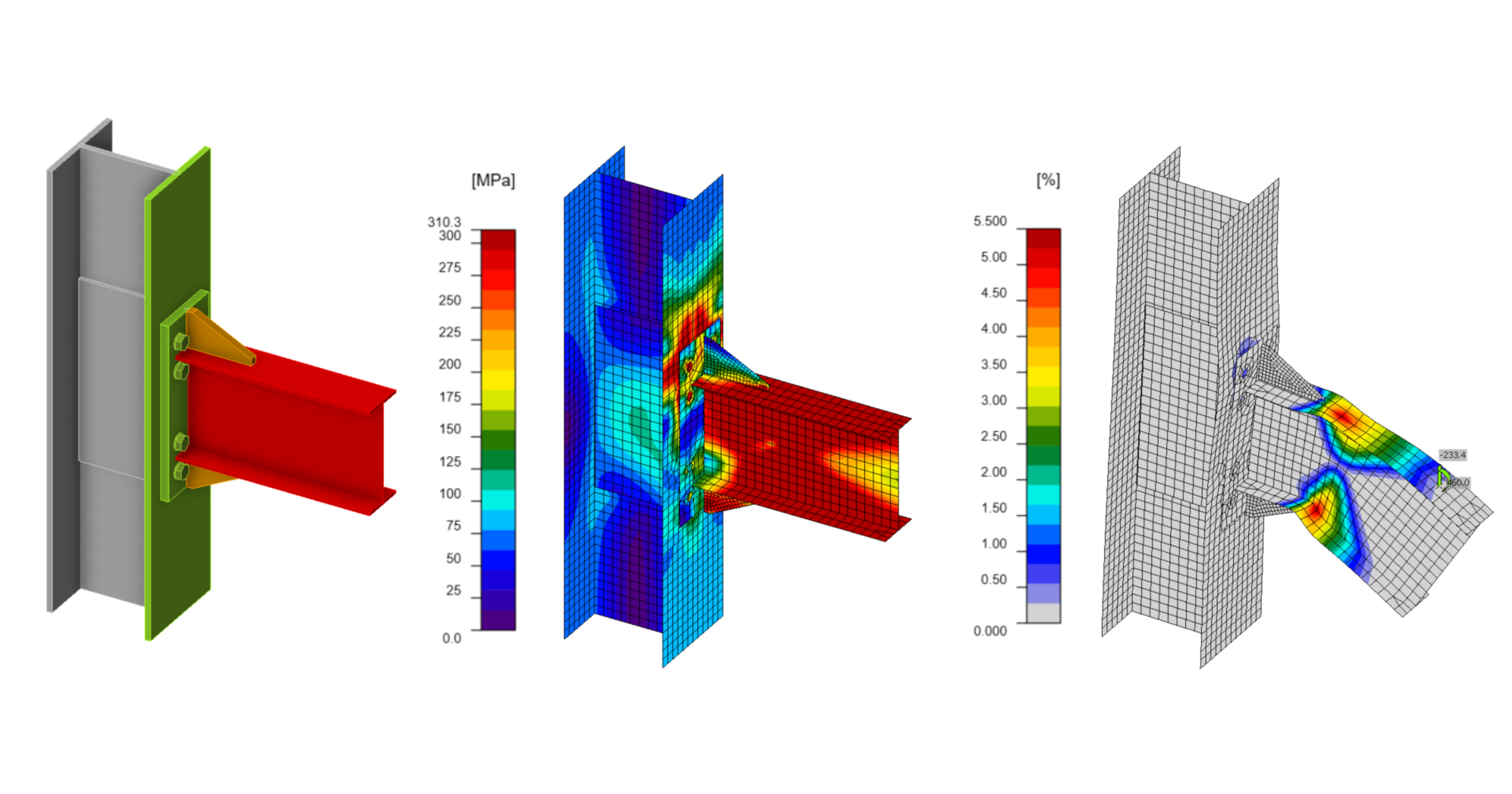Detailing of Moment Frames using Prequalified Connections - AISC
Prequalified connections
According to AISC 341, design of beam-column connection for Intermediate Moment Frames (IMF) and Special Moment Frames (SMF) shall satisfy the requirements of one of the following:
- Use prequalified connections from AISC 358
- Prequalification according to AISC 341 Section K1
- Cyclic testing according to AISC 341 Section K2
In practice, Option 1 is most commonly used due to its practicality.
AISC 358 prequalified connections
AISC 358 provides engineers with several options of beam-to-column connection which are already prequalified for seismic.
For each type of connection, specific empirical formulas and geometry limitations are provided to ensure that plasticity occurs in the intended location.
Now, let us see how to design Bolted End-Plates.
Bolted End-Plate (BUEEP or BSEEP)
Bolted end-plates are subdivided into 3 categories:
- Four-bolt unstiffened - BUEEP - 4E
- Four-bolt stiffened - BSEEP - 4ES
- Eight-bolt stiffened - BSEEP - 8ES
Each sub-category has its own geometry limitations and empirical formulas to ensure that plasticity develops in the intended location.
Take the most simple, BUEEP - 4E, for example. After doing calculations in your spreadsheet, you found out that the capacity of this connection is not sufficient. You would need to upsize your connection to the next type, BSEEP - 4ES. However, due to the different empirical formulas and geometry limitations, you would need to create an entirely new spreadsheet. And if it turns out that the capacity of this connection is still not sufficient, you would later need to upsize again to BSEEP - 8ES, that would require yet another spreadsheet.
Now, imagine that you have finally finished your design with BSEEP-8ES but you are asked to change to another type (RBS, BFP or something else). You would have to review a different chapter in AISC 358, study the new geometry limitations and new empirical formulas to create a totally different spreadsheet. That means you would potentially need to create four separate spreadsheets, which would take a lot of time and effort.
Let us see how this process can be done efficiently using IDEA StatiCa.
IDEA StatiCa prequalified connection checks
With IDEA StatiCa, you can skip most of that manual work. IDEA StatiCa provides templates for prequalified connections. Thus, you do not need to model everything from scratch.
For example, you can start with this template for BSEEP - 4ES.
Next, choose the used lateral load resisting system (IMF/SMF) and the connection type. Based on that, IDEA StatiCa provides geometry limitation checks.
For Bolted End-Plates, the following checks are done according to Chapter 6 in code AISC 358-16:
- Checks of the beam limitations according to Chapter 6.3.1.
- Checks of the column limitations according to Chapter 6.3.2.
- Checks of the connection detailing limitations according to Chapter 6.7 and Table 6.1. This check contains a check of the bolt and end plate geometry. If stiffened, the stiffener of the end plate is also checked.
If the geometry limitations are not met, warnings will be shown on the top left of the 3D screen and also in the report. This helps you ensure that your connection is within AISC 358 limits.
Once you set up your model and input the correct forces, simply click Calculate.
IDEA StatiCa provides:
- Code compliance checks
- Visualizations of stress, plastic strain, and yield zones
- Comprehensive report
- And more
If you were to change to another type, the process would be similarly quick. Select the template, input forces, then click Calculate.
Conclusion
Designing prequalified connections according to AISC 358 involves navigating system-specific formulas and geometry limits, and requiring multiple spreadsheets for different connection types. IDEA StatiCa streamlines this process by offering built-in templates, automated geometry checks, and visual feedback—all within a single platform. This enables engineers to switch between connection types quickly while ensuring compliance with design codes.
For more information regarding prequalified connections in IDEA StatiCa, please visit this article:
- Qualifications checks of seismic prequalified connections for AISC
- AISC 358 Prequalified Moment Connection Checks
- Verification: End Plate Moment (EPM) Prequalified Connection - AISC
For hands-on tutorial, please visit this article:



